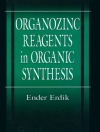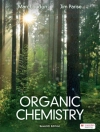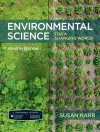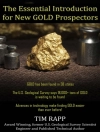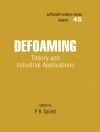Functional oxides have a wide variety of applications in the
electronic industry. The discovery of new metal oxides with
interesting and useful properties continues to drive much research
in chemistry, physics, and materials science.
In Functional Oxides five topical areas have been
selected to illustrate the importance of metal oxides in modern
materials chemistry:
* Noncentrosymmetric Inorganic Oxide Materials
* Geometrically Frustrated Magnetic Materials
* Lithium Ion Conduction in Oxides
* Thermoelectric Oxides
* Transition Metal Oxides – Magnetoresistance and
Half-Metallicity
The contents highlight structural chemistry, magnetic and
electronic properties, ionic conduction and other emerging areas of
importance, such as thermoelectricity and spintronics.
Functional Oxides covers these complex concepts in a
clear and accessible manner providing an excellent introduction to
this broad subject area.
Table of Content
Inorganic Materials Preface.
Preface.
List of Contributors.
1. Noncentrosymmetric Inorganic Oxide Materials: Synthetic Strategies and Characterization Techniques (P. Shiv Halasyamani).
1.1 Introduction.
1.2 Strategies toward Synthesising Noncentrosymmetric Inorganic Materials
1.3 Electronic Distortions
1.4 Properties Associated with Noncentrosymmetric Materials
1.5 Outlook – Multifunctional Materials
1.6 Concluding Thoughts
Acknowledgements.
References.
2. Geometrically Frustrated Magnetic Materials (John E. Greedan).
2.2 Geometric Frustration
2.3 Real Materials
2.4 Concluding Remarks
References.
3. Lithium Ion Conduction in Oxides (Edmund Cussen).
3.1 Introduction.
3.2 Sodium and Lithium ß-Alumina.
3.3 Akali Metal Sulfates and the Effect of Anion Disorder on Conductivity.
3.4 LISICON and Related Phases.
3.5 Lithium conduction in Na SICON-Related phases.
3.6 Doped Analogues of Li Zr2 (PO4)3.
3.7 Lithium conduction in the Perovskite Structure.
3.8 Lithium-Containing Garnets.
References.
4. Thermoelectric Oxides (Sylvie Hébert and Antoine Maignan).
4.1. Introduction.
4.2. How to Optimise Thermoelectric Generators (TEG).
4.3. Thermoelectric Oxides.
4.4. Conclusion.
Acknowledgments.
References
5. Transition Metal Oxides – Magnetoresistance and Half-Metallicity (Tapas Kumar Mandal and Martha Greenblatt).
5.1 Introduction.
5.2 Magnetoresistance: Concepts and Developments.
5.3 Half-Metallicity.
5.4 Oxides Exhibiting Half-Metallicity.
5.5 Magnetoresistance and Half-Metallicity of Double Perovskites.
5.6 Spintronics – The Emerging Magneto-electronics.
5.7 Summary.
Acknowledgments.
References.
Index.
About the author
Professor Duncan Bruce graduated from the University of
Liverpool (UK), where he also gained his Ph D. In 1984, he took up a
Temporary Lectureship in Inorganic Chemistry at the University of
Sheffield and was awarded a Royal Society Warren Research
Fellowship. He was then appointed Lecturer in Chemistry and was
promoted Senior Lecturer in 1994, in which year he became
co-director of the Sheffield Centre for Molecular Materials. In
1995, he was appointed Professor of Inorganic Chemistry at the
University of Exeter. Following the closure of Exeter’s chemistry
department in 2005, Professor Bruce took up his present position as
Professor of Materials Chemistry in York. He is currently Chair of
the Royal Society of Chemistry Materials Chemistry Forum. His
current research interests include liquid crystals and
nanoparticle-doped, nanostructured, mesoporous silicates. His work
has been recognized by various awards including the British Liquid
Crystal Society’s first Young Scientist prize and the RSC’s Sir
Edward Frankland Fellowship and Corday-Morgan Medal and Prize. He
has held visiting positions in Australia, France, Japan and Italy.
Dr. Richard Walton, who was also formerly based in the
Department of Chemistry at the University of Exeter, now works in
the Department of Chemistry at the University of Warwick. His
research group works in the area of solid-state materials chemistry
and has a number of projects focusing upon the synthesis,
structural characterization and properties of inorganic
materials.
Dermot O’Hare is Professor in the Chemistry Research
Laboratory at the University of Oxford.
His research group has a wide range of research interests. They
all involve synthetic chemistry ranging from organometallic
chemistry to the synthesis of new microporous solids.
Duncan Bruce and Dermot O’Hare have edited several editions of
Inorganic Materials published by John Wiley & Sons
Ltd.



